蛇年 The Year of the Snake 2025

What is Chinese New Year?
 Chinese New Year, known in Chinese as 春節/春节 (translates to Spring Festival), is an annual celebration that occurs on 立春
Chinese New Year, known in Chinese as 春節/春节 (translates to Spring Festival), is an annual celebration that occurs on 立春
(lì chūn), marking the ending of the winter season and welcoming the spring. The specific date is determined by the traditional Chinese calendar, a blend of solar, lunar and other cycles, primarily used for social and agricultural purposes, landing on different days each year of the Gregorian calendar. Each year is associated with a zodiac animal, rotating between twelve animals, known collectively as the Twelve Earthly Branches (地支/, dì zhī). Each animal is believed to have attributes that are thought to affect not only general events, but also the luck, career, relationships and health of individuals, especially those born under that sign. The year of 2025 is the Year of the Snake, 蛇 (shé), associated with wisdom, strategy, transformation and intuition.
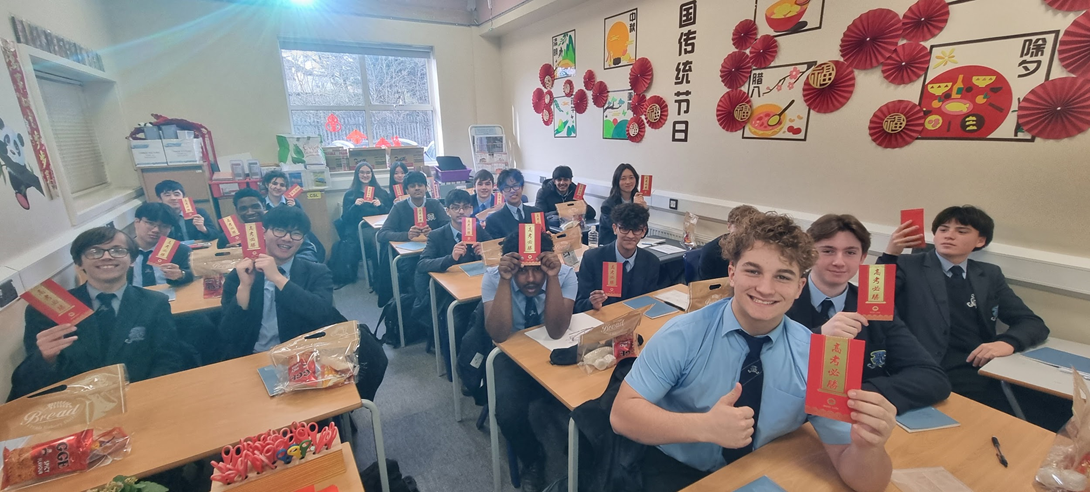
Common Traditions/Practices
Red packets, 红包 (hóng bāo), are traditionally passed out during Chinese New Year celebrations, from married couples or elderly to those younger than them and unmarried. They almost always contain money, in varying amounts, but favouring amounts that begin with even numbers, such as eight, 八 (bā), a homophone for the word fortune, 發/发 (fā); or six, 六 (liù), a homophone for smooth, 溜 (liū). No envelope contains an amount beginning with four, 四 (sì), as it is the homophone for die, while odd numbers are avoided. It is customary that the money placed in red envelopes are bills, ideally new and not folded. Before receiving red packets, you are always expected to wish your elders by wishing them a happy new year and a year of happiness, health and good fortune, normally saying ”新年快乐,恭喜发财,身体健康”
(xīnnián kuàilè, gōngxǐ fācái, shēntǐ jiànkāng).
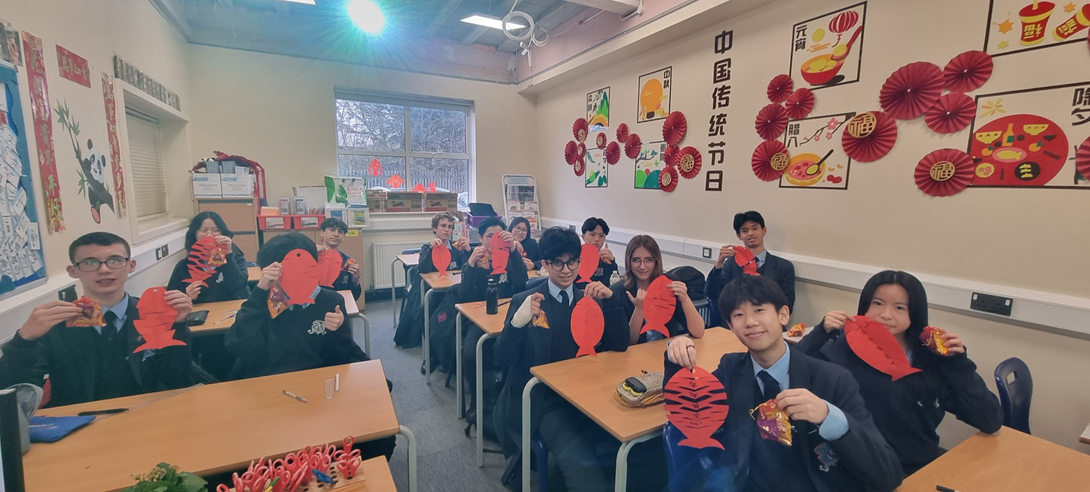
Apart from money, other gifts are given to friends and relatives when visiting their homes for celebrations. Most gifts are wrapped in red or golden paper, symbolising good luck, and are commonly fruits (especially oranges and tangerines, but not pears), cakes, biscuits, chocolates and sweets. However, certain items are not given, such as the aforementioned pears, 梨 (lí), as it sounds like the word of separation, 離/离 (lí), amongst many others.
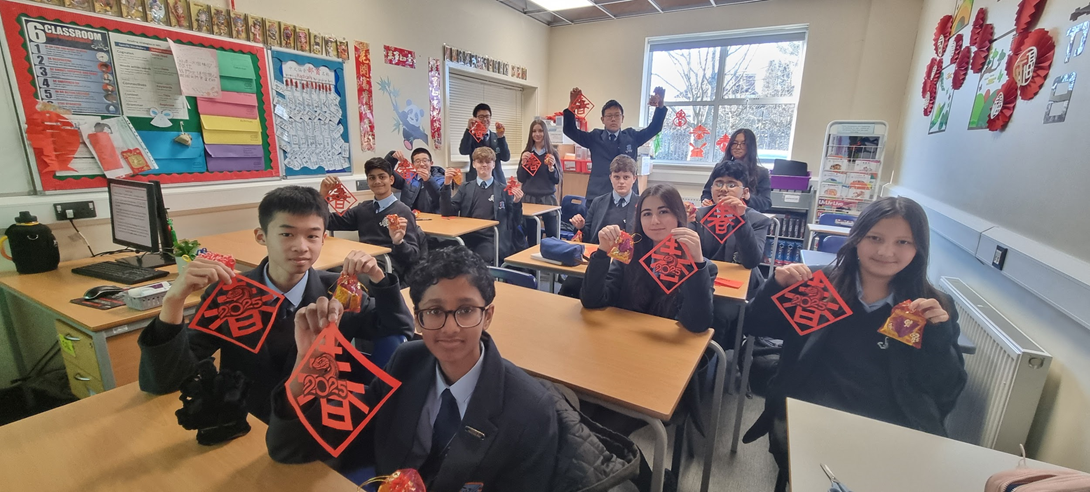
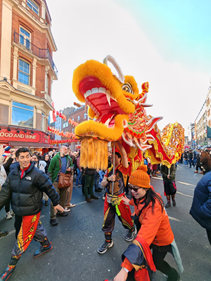 Moreover, many places across the world, where there are communities with a large Asian population, celebrate by holding parades, such as one recently held in London. Both lion and dragon dances, terms not to be used interchangeably, are performed, accompanied by a loud beating of drums and clashing of cymbals to ward off bad spirits.
Moreover, many places across the world, where there are communities with a large Asian population, celebrate by holding parades, such as one recently held in London. Both lion and dragon dances, terms not to be used interchangeably, are performed, accompanied by a loud beating of drums and clashing of cymbals to ward off bad spirits.
How Chinese New Year is celebrated at BGS
From having studied Chinese from Year 8, to now in Year 13, we have consistently been celebrating Chinese New Year and its traditions with Mrs Lu. Each year it is celebrated differently, from making our own cut-out decorations, learning lion and dragon dancing, to making our own red packets. Mrs Lu sometimes also makes traditional foods, such as 汤圆 (tāng yuán), a sweet rice ball typically eaten in the Southern provinces of China, and dumplings 饺子(jiao zi),eaten by northern people symbolise gold ingots, representing wealth and prosperity. Since China is such a large country, the traditions vary per region, so it is very interesting to see how other provinces and regions celebrate this national holiday. Recently, we had the school’s own South East Asian Society (SEAS), which had a Lunar New Year food sale in the canteen, which was proven to be very successful.
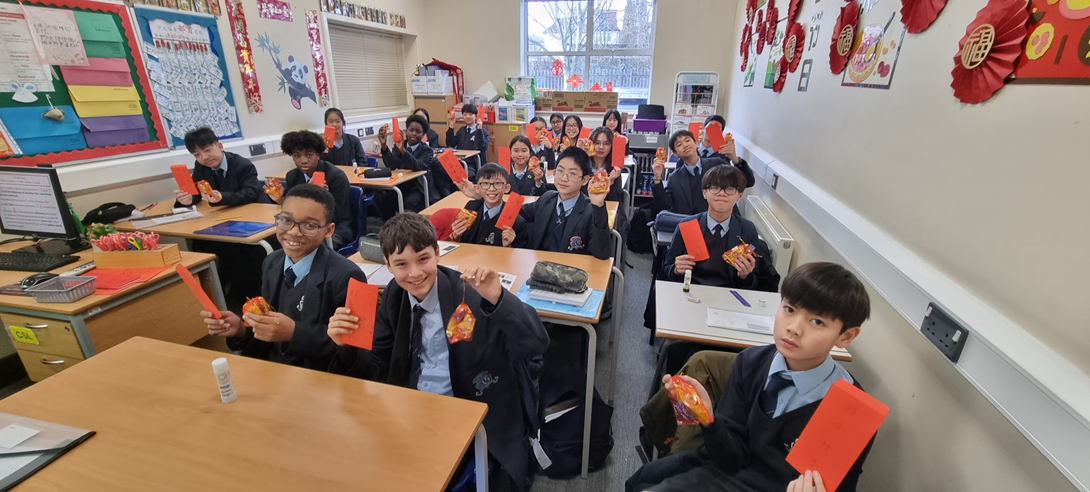
I wish everyone and their families wisdom, success and prosperity in the Year of the Snake!
祝 蛇年大吉,“蛇”么都好!Alex Wong, Year 13

